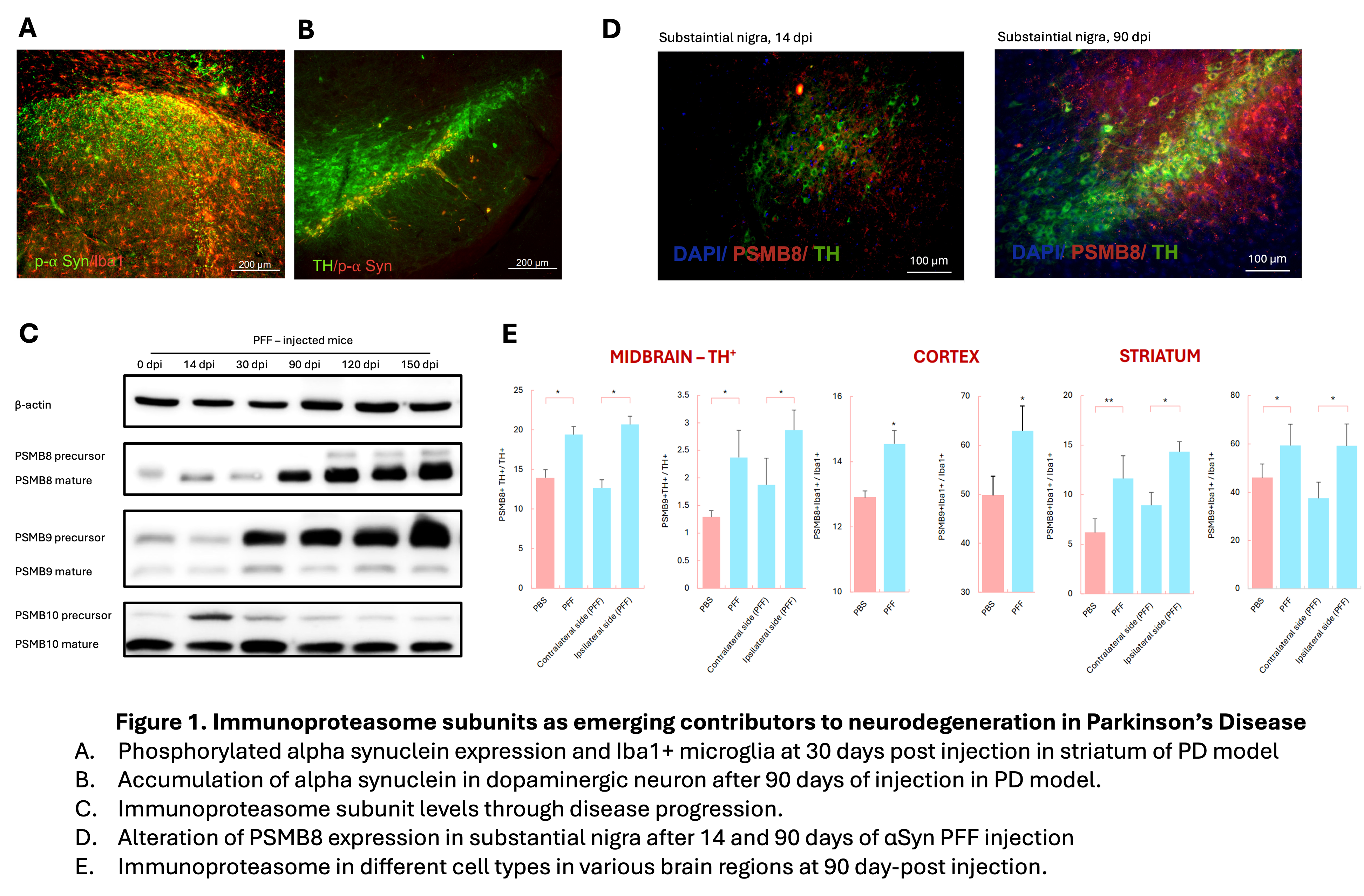Objective: To gain comprehensive contribution of immunoproteasome in central nervous system of Parkinson’s Disease
Background: Recent investigations have elucidated that, in addition to the classical hallmarks of Parkinson’s Disease (PD)—namely, the depletion of dopaminergic neurons and the pathological aggregation of α-Synuclein (αSyn)—immune responses play a pivotal role in the disease’s pathogenesis. The immunoproteasome, a specialized variant of the proteasome within the ubiquitin-proteasome system, is implicated in mediating immune responses and protein degradation, potentially serving as a critical nexus linking these pathogenic processes. In this study, we evaluated the spatiotemporal evolution of immunoproteasome in the PD mouse model.
Method: Spatiotemporal alteration of immunoproteasome subunits was deciphered by using αSyn-preformed fibrils injected PD mouse model. In which temporal changes in both precursor and mature forms of subunits were determined through immunoblotting, while the spatial distribution of these subunits was investigated through immunofluorescence. Eventually, their expression in specific cell types was measured by flow cytometry.
Results: The PD mouse model, injected with αSyn preformed fibrils, revealed abundant expression of phosphorylated αSyn at the early timepoint of 30 days post-injection in the striatum and its accumulation in substantial nigra after 90 days of injection (Figure 1A, B).
All catalytic subunits (PSMB8, PSMB9, PSMB10) of the immunoproteasome exhibited increasing tendency accompanying disease progression, but only PSMB8 demonstrated a significant induction in its mature form. (Figure 1C).
Immunofluorescence indicated that PSMB8 expression in dopaminergic neurons was increased significantly from rare at an early timepoint to highly abundant at a late stage of the disease (Figure. 1D). Quantified flow cytometry results confirmed the abundant expression of PSMB8 in the midbrain dopaminergic neurons and microglia of the cortex and striatum after 90 days of injection (Figure 1E).
Conclusion: Our study supports that immunoproteasome PSMB8 contributes to PD pathogenesis.
Immunoproteasome as contributors in PD
To cite this abstract in AMA style:
HD. Nguyen, YE. Kim. Immunoproteasome subunits as emerging contributors to neurodegeneration in Parkinson’s Disease [abstract]. Mov Disord. 2024; 39 (suppl 1). https://www.mdsabstracts.org/abstract/immunoproteasome-subunits-as-emerging-contributors-to-neurodegeneration-in-parkinsons-disease/. Accessed December 22, 2025.« Back to 2024 International Congress
MDS Abstracts - https://www.mdsabstracts.org/abstract/immunoproteasome-subunits-as-emerging-contributors-to-neurodegeneration-in-parkinsons-disease/

